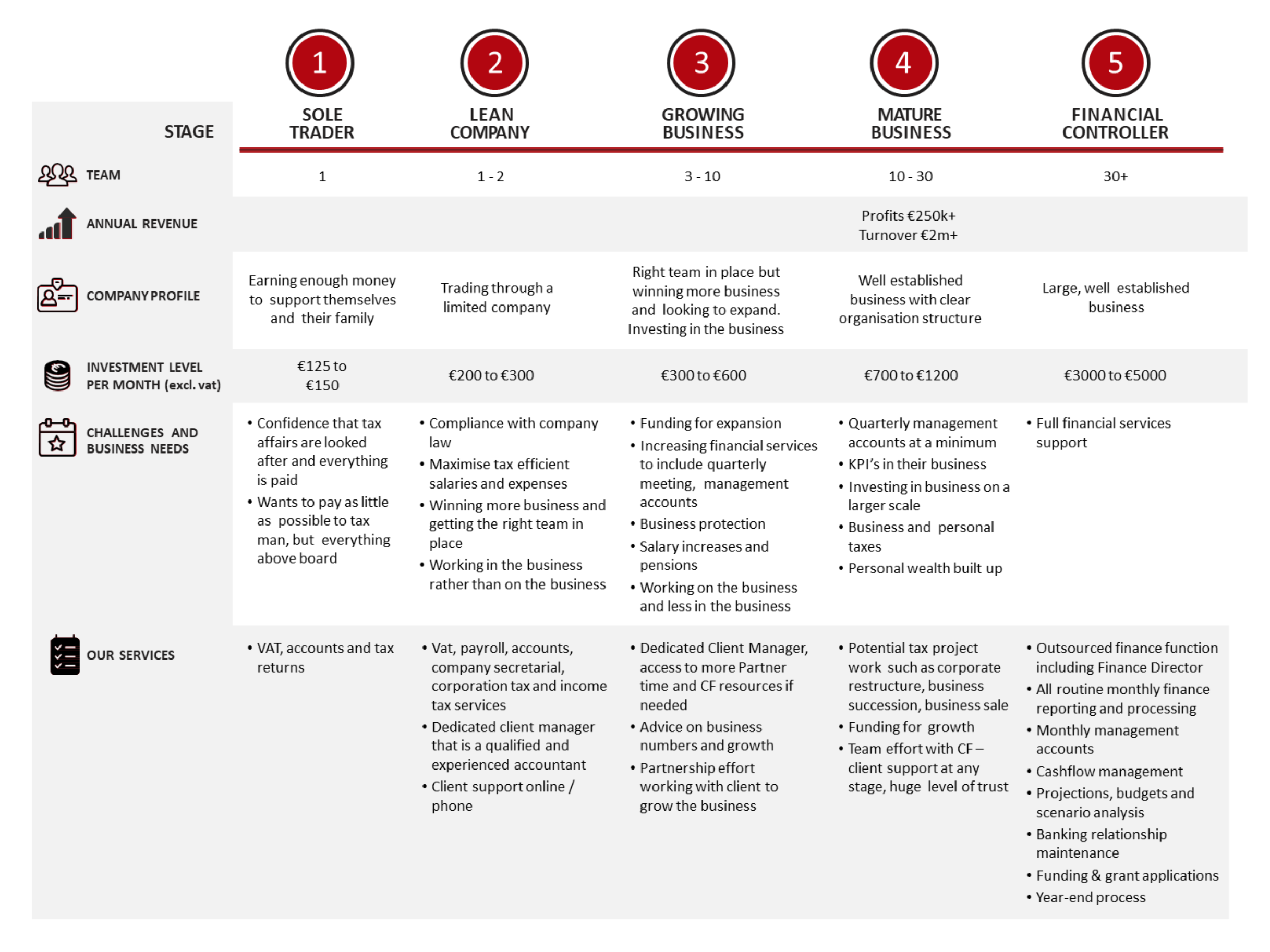Residential Premises Rental Income Relief [RPRIR] is a new tax relief for landlords. It is only available to individual landlords and isn’t available to companies, trusts, or partnerships. RPRIR is a relatively new relief, and it applies for the four tax years 2024 to 2027. 2025 is the first year to claim the relief for 2024. Claiming it has proved problematic so far. I have experienced difficulty claiming this for clients in the early months of 2025.
I will tell you more about
- How much it’s worth
- Qualifying premises
- How it works
- Clawback
- Summary
How much it’s worth
The maximum tax relief for each year is
| 2024 | €600 |
| 2025 | €800 |
| 2026 | €1,000 |
| 2027 | €1,000 |
So, over 4 years, the most you can get from this relief is €3,400. This is subject to the rule that the relief is the lowest of the amount for the year or
- 20% of the landlord’s profits from a qualifying premises, after capital allowances and rental losses forward, or
- 20% of the landlord’s overall rental income, after relief for capital allowances and rental losses forward
To get the full RPRIR each year, you’ll need rental profits after capital allowances and losses of
| 2024 | €3,000 |
| 2025 | €4,000 |
| 2026 | €5,000 |
| 2027 | €5,000 |
To qualify for the relief, you must let a qualifying premises.
Qualifying Premises
A qualifying premises is a rented residential premises situated in Ireland. The landlord claiming the relief owns the property or part of the property. And on the 31st of December each year [2024 to 2027], the property is either
- Occupied by a tenant under a tenancy registered with the Residential Tenancies Board. [RTB] or
- Let by the landlord to a public authority or
- Is a property to which Part 11 of Housing (Private Rented Dwellings) Act 1982 applies [rent controlled tenancies] or
- Where there is no tenant in place, the landlord is marketing the premises for rent.
Other conditions
For every tax year that a landlord claims RPRIR, on the 31st of December, the landlord must be
- compliant with their LPT obligations for all qualifying premises, and
- hold a valid tax clearance certificate
Not only do you need to satisfy the other conditions, but you won’t get RPRIR where one of your tenants is related to you. This applies not only to your relations but to the relations of your spouse or civil partner. This includes spouses, civil partners, brothers, sisters, ancestors, or lineal descendants. It would also include an uncle, aunt, nephew, or niece of the landlord or of a spouse or civil partner of the landlord.
How it works
To show you how it works, I’ll give you a few examples and use Shiner and Giselle Troy’s situation to explain further. The Troys let a house on the outskirts of Youghal for €1,000 per month to a lovely Polish couple. They registered the tenancy with the RTB as their tax advisor told them to do this. Otherwise, they wouldn’t get a deduction for the mortgage interest paid.
2024
Their rental computation for 2024 looks like this
| Rental Income | €12,000 |
| Less Mortgage interest | (€6,000) |
| Repairs | (€950) |
| Insurance & RTB | (€450) |
| Accountancy | (€600) |
| Rental Profit | €4,000 |
| Capital allowances | (€1,250) |
They own the property 50:50. The tenant isn’t related to them, and the LPT is up to date. Plus, Giselle applied for tax clearance on the 31st of December 2024, so that’s in place.
Both have a rental profit of €2,000 and capital allowances of €625, which is a net profit of €1,375. For 2024, Shiner’s RPRIR is the lowest of
- 50% of the relief for 2024 of €300 or
- 20% of the rental profit after capital allowances, which is €275 [€1,375×20%]
Both will get the lower amount of RPRIR of €275 each or €550 in total.
2025
From January 2025, the monthly rent increased to €1,200. Their rental computation is
| Rental Income | €14,400 |
| Less Mortgage interest | (€5,000) |
| Repairs | (€650) |
| Insurance & RTB | (€500) |
| Accountancy | (€650) |
| Rental Profit | €7,600 |
| Capital allowances | (€1,250) |
Both have a rental profit of €3,800 and capital allowances of €625, giving each a net profit of €3,175. For 2025, Shiner’s RPRIR is the lowest of
- 50% of the relief for 2025 of €400 or
- 20% of the rental profit after capital allowances, which comes to €635
In 2025, both will get 50% of the relief of €400 each or €800 in total.
But to get the relief in 2025, they will have to meet all the conditions as discussed above. If Shiner doesn’t have tax clearance on the 31st of December 2025, then they won’t qualify for the relief.
2026
In 2026, the rental income and expenses were similar to those in 2025. But the lovely Polish couple bought a house and moved out at the end of August that year. Young Tommy Troy got the course he wanted in UCC. It’s proving difficult to get accommodation in Cork city, so he will stay in the house in Youghal. Now that a connected person occupies their house, they won’t qualify for RPRIR in 2026. Not only that, but the relief already claimed in 2024 and 2025 of €1,350 is clawed back.
Let’s assume young Tommy doesn’t move into the parent’s property, and it is vacant for a few months. The Troys get a new tenant in January 2027. Even though there was no tenant in place at the end of 2026, they can still get RPRIR that year. That’s provided they were looking for a tenant before the end of 2026. In Revenue guidance, it states
“The landlord may be required to produce evidence of advertisements, etc., to verify that the property was being actively marketed for rent.”
2027
In 2027, the Troys rent the property to a lovely Dutch couple until the end of June. Shiner has a mate in Youghal that tells him there’s a killing to be made from Airbnb during the summer. In July and August, they let the property for €800 a week through Airbnb.
Claim the relief
If you are in the self-assessment system and file a tax return each year, you’ll claim the relief in your Form 11. Those who don’t file an annual Form 11 can claim the relief on their Form 12 online through ROS or MyAccount. What you’ll need to claim it are
- Ticking a box to confirm you met RTB, LPT, and tax clearance obligations
- The LPT ID of the qualifying property
- The net rental income after capital allowances and losses and
- Your percentage ownership of the property.
As mentioned, at the time of writing, there is an issue claiming this relief on the 2024 Form 11. The calculation is incorrect, and Revenue are aware of this. It is due to be fixed by the end of this month. Up to this point, advisors filing tax returns for their clients will have to calculate the relief. That calculation will differ from the Revenue calculation. As a result, you won’t agree with the Revenue numbers in column B of the self-assessment panel. You will input the correct numbers there. This has caused issues with delayed assessments and assessments that will need to be revisited once Revenue fix the problem.
My understanding is that the relief works fine on the Form 12.
Clawback
I mentioned the clawback earlier and how it would impact the Troys. Revenue have made the clawback quite wide-ranging, and it’s useful to know some of the pitfalls. They’ve adopted a carrot and stick approach. You can get the relief, but we want you to keep renting the property to unconnected tenants. If you don’t, the stick comes out!
The clawback period is four years from the first year that you claimed the relief. So, if you claim it for 2024, the clawback period ends at the end of 2028. And it’s a one-out-all-out situation. The clawback arises if
- You dispose of any of the qualifying premises
- There is a change of use from rented residential to short-term letting or
- You rent the property to a connected person or relative
There is no clawback where the landlord dies during a year of assessment.
The Troys got RPRIR for the 3 years 2024, 2025, and 2026. They changed the use of the property in 2027 to short-term lettings. Not only will they not get the relief in 2027, but there will be a clawback for 2024, 2025, and 2026. The clawed-back tax will fall due in the year that the clawback event happens.
Summary
Residential Premises Rental Income Relief is one of many tax reliefs for landlords. Is it worth all the hassle? In most cases, yes. I’d be of the view to claim it as it’s worth up to €3,400. And if you have to pay it back, then so be it. Having tax clearance on the 31st of December each year is an interesting obligation. There will be thousands out there who have all their taxes up to date on that day. But did they have a tax clearance certificate on the 31st of December 2024? For our clients with rental properties, we applied for tax clearance on the 31st. Many had tax clearance already, but there were quite a few who didn’t.
My complaint is that the clawback period is too long. Plus, there will be many cases where you have to sell a property or put a relative in there out of necessity. It seems overly harsh to penalise those who had complied with the rules all along.
Want help to ensure your taxes are right? If so, start here


